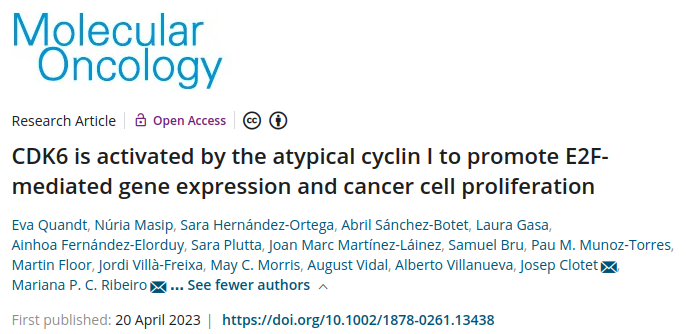A paper has been just published in Molecular Oncology in a collaboration led by our colleagues Josep Clotet and Mariana P. Ribeiro (UIC Barcelona) on the interaction of CDK6 with the atypical cyclin I. The CBBL has contributed with molecular modelling analysis of the interface region. Martin Floor and Pau MArc Muñoz, past members of the CBBL, did all the computational work.
Abstract: Cyclin-dependent kinases (CDKs), together with their cyclin partners, are the master cell cycle regulators. Remarkably, the cyclin family was extended to include atypical cyclins, characterized by distinctive structural features, but their partner CDKs remain elusive. Here, we conducted a yeast two-hybrid screen to identify new atypical cyclin–CDK complexes. We identified 10 new complexes, including a complex between CDK6 and cyclin I (CCNI), which was found to be active against retinoblastoma protein. CCNI upregulation increased the proliferation of breast cancer cells in vitro and in vivo, with a magnitude similar to that seen upon cyclin D upregulation, an effect that was abrogated by CDK6 silencing or palbociclib treatment. In line with these findings, CCNI downregulation led to a decrease in cell number and a reduction in the percentage of cells reaching S phase. Finally, CCNI upregulation correlated with the high expression of E2F target genes in large panels of cancer cell lines and tissue samples from breast cancer patients. In conclusion, we unveil CCNI as a new player in the pathways that activate CDK6, enriching the wiring of cell cycle control..

